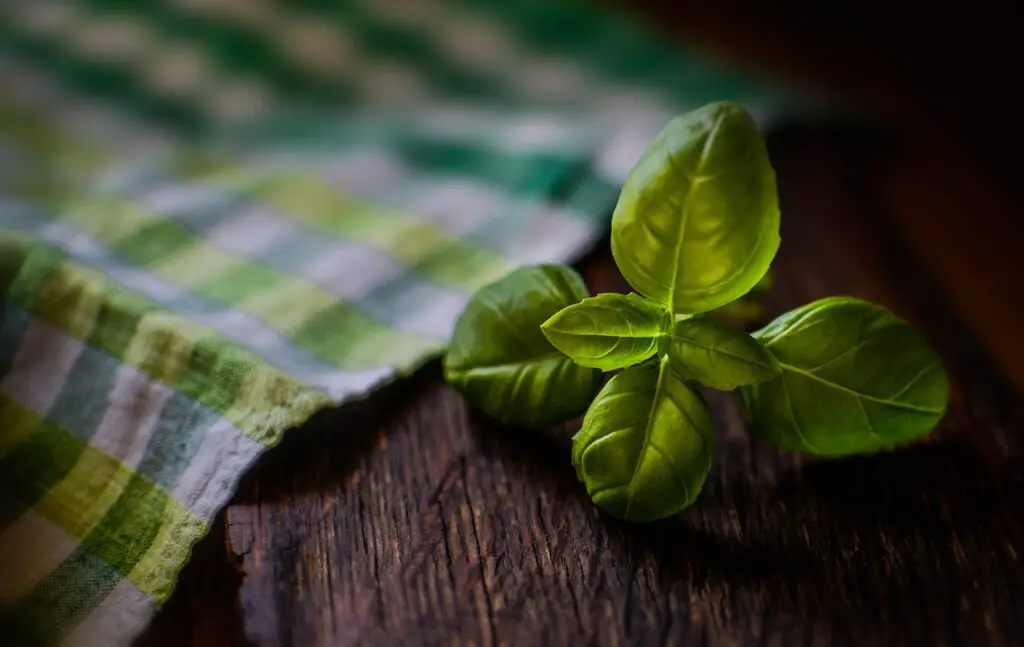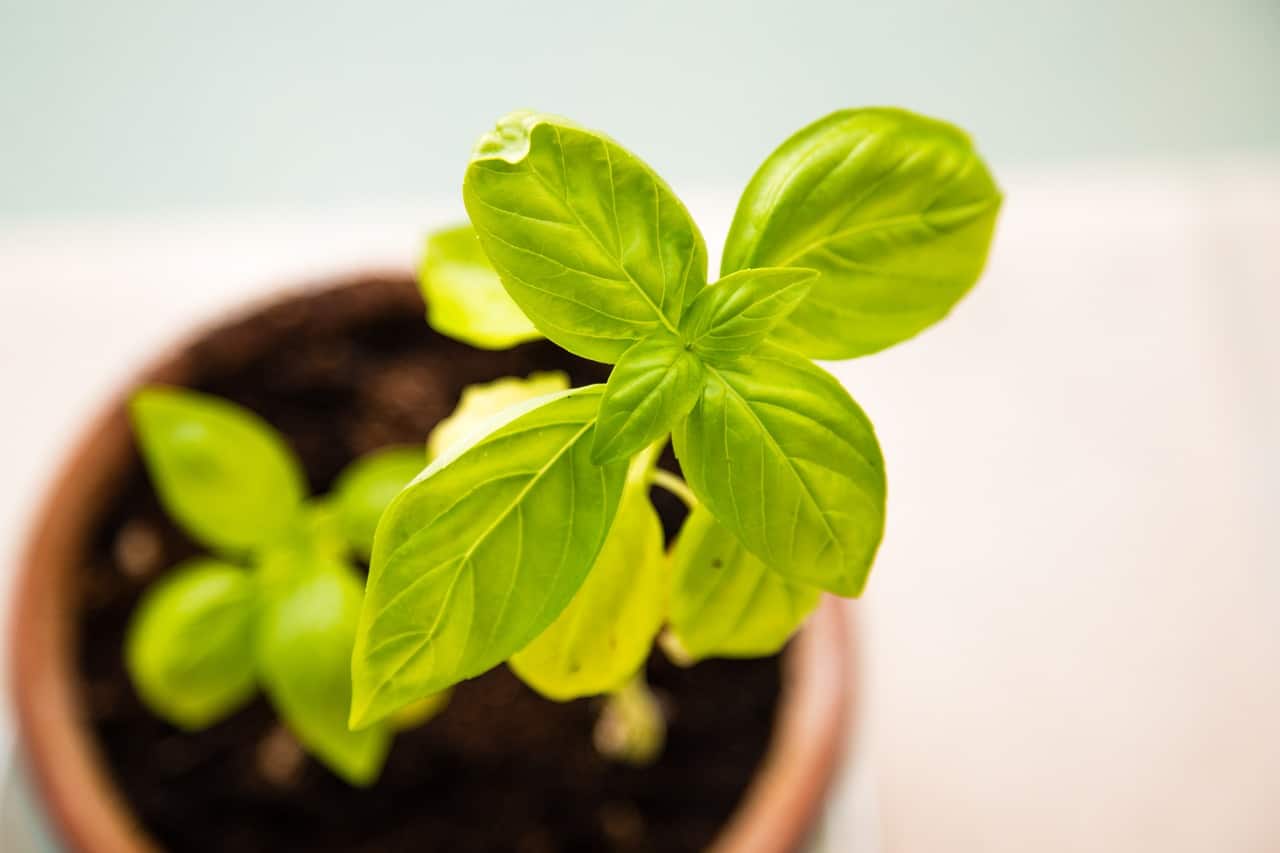
The basil plant, a member of the mint family, is prized for its aromatic leaves with flavors ranging from sweet to spicy. Commonly grown varieties include sweet basil, Thai basil, and lemon basil, each offering distinct tastes and aromas. Basil thrives in warm, sunny conditions and well-drained soil. It is often cultivated as an annual, but certain varieties may behave as perennials in mild climates. Regular pruning promotes bushy growth and prevents flowering, ensuring continual leaf production.
Common Ways Of Using Basil
Basil is a versatile herb used in various culinary dishes worldwide. Commonly found in Italian cuisine, basil enhances the flavor of pasta sauces, pizzas, and bruschetta. It adds freshness to salads, sandwiches, and wraps. Basil is a key ingredient in pesto, a vibrant sauce made with basil, garlic, pine nuts, Parmesan cheese, and olive oil. It infuses aromatic flavor into soups, stews, and curries. Additionally, basil leaves are used to garnish cocktails, desserts, and fruit salads. Its versatility makes basil an indispensable herb in kitchens, elevating the taste of countless dishes with its distinctive aroma and flavor.
Basil Recipes
Basil recipes offer a variety of delicious options. From classic pesto sauce to caprese salad, Margherita pizza to Thai basil chicken, basil adds aromatic flavor to a range of dishes, making it a staple in many cuisines worldwide.
Basil Pesto
To make basil pesto, blend fresh basil leaves, garlic, pine nuts, Parmesan cheese, and olive oil in a food processor until smooth. Add salt and pepper to taste. Adjust consistency with more olive oil if needed. Serve over pasta, spread on sandwiches, or use as a dip. Basil pesto is versatile and adds a burst of flavor to various dishes.
Basil Dressing
To make basil dressing, blend fresh basil leaves, garlic, lemon juice, Dijon mustard, honey, salt, and pepper in a blender or food processor. Gradually add olive oil until emulsified. Adjust seasoning to taste. This vibrant dressing pairs well with salads, grilled vegetables, or drizzled over grilled chicken or fish for a refreshing burst of flavor.
Basil Butter
To make basil butter, mix softened butter with finely chopped fresh basil leaves, minced garlic, salt, and pepper in a bowl. Blend until well combined. Shape the mixture into a log using plastic wrap and refrigerate until firm. Slice and use as a flavorful spread for bread, corn on the cob, or grilled meats. Basil butter adds a delightful herbal kick to any dish.
Basil Tea
To make basil tea, steep fresh basil leaves or flowers in hot water for 5-7 minutes. Strain and sweeten with honey or sugar if desired. Basil tea offers a refreshing herbal flavor and may provide health benefits like improved digestion and stress relief. Enjoy it hot or cold for a soothing beverage any time of day.

Preserving Fresh Basil
Preserve basil by making pesto, drying leaves, or freezing them in oil or water. These methods ensure a steady supply of basil’s aromatic flavor for future culinary adventures. Caring for your basil plant is very important if you want to get large harvests each year that you then can preserve and enjoy at a later date. Knowing how to harvest the leaves is a great way to ensure growth continues for the whole season
How To Freeze Basil
To freeze basil, start by rinsing the leaves and patting them dry. Then, either chop the leaves finely or leave them whole. Next, place the basil in ice cube trays and fill each compartment with olive oil or water. Once frozen, transfer the basil cubes to a freezer bag for storage. This method preserves the flavor and aroma of basil, allowing you to enjoy its freshness in dishes throughout the year.
Freezing Basil Cubes
To freeze basil cubes, start by washing and drying fresh basil leaves. Chop the leaves finely or leave them whole. Place the basil in ice cube trays, then fill each compartment with water or olive oil. Once frozen, transfer the cubes to a freezer bag for storage. These basil cubes can be used to add flavor to soups, sauces, and other dishes year-round.
Drying Fresh Basil Leaves
To dry basil leaves, first, rinse them gently and pat dry. Next, spread the leaves in a single layer on a clean, dry surface, away from direct sunlight. Allow them to air dry for several days until they become brittle. Once dried, store the basil leaves in an airtight container. Dried basil leaves can be crumbled and used to flavor various dishes, adding a delightful herbal aroma and taste.
FAQ
How Long Can You Freeze Basil
You can freeze basil for up to six months while still maintaining its flavor and aroma. To freeze basil effectively, wash and dry the leaves, chop or leave them whole, and then pack them into airtight containers or freezer bags. Properly stored in the freezer, basil retains its freshness and can be used in various culinary dishes long after its harvest.
How To Puree And Freeze Basil
To puree and freeze basil, start by washing and drying the leaves. Next, blend the basil with olive oil until smooth. Spoon the mixture into ice cube trays and freeze until solid. Once frozen, transfer the basil cubes to a freezer bag for long-term storage. This method preserves the vibrant flavor of basil and allows for convenient portioning when adding it to dishes later on.

